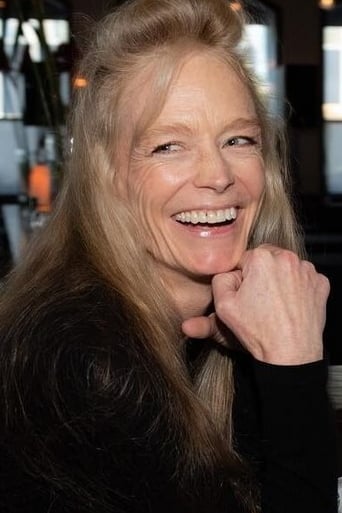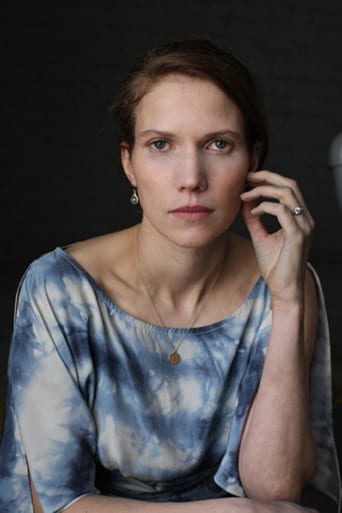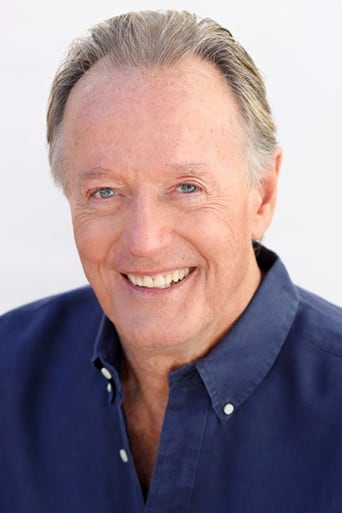GetPapa
Far from Perfect, Far from Terrible
PiraBit
if their story seems completely bonkers, almost like a feverish work of fiction, you ain't heard nothing yet.
Portia Hilton
Blistering performances.
Sienna-Rose Mclaughlin
The movie really just wants to entertain people.
Cineanalyst
I've been viewing a bunch of Dracula-related movies since reading Bram Stoker's novel, and I'm not disinclined towards highly-stylized and artistic adaptations. My favorite Dracula film, after all, is a postmodern silent-film ballet, "Dracula: Pages from a Virgin's Diary" (2002). Not exactly mainstream fodder. But, "Nadja" is merely artsy; it throws the entire book of arthouse gimmicks onto the screen and pretends to art.It's filmed in black and white, with many scenes photographed with a toy camcorder, there's lots of cigarette smoking, there are scenes where indie music blares in some attempt to cover with emotionality images of nothing happening, there are other strange sound effects, voiceover narration, hardly-motivated canted and obscured angles, slow motion, jump cuts, negative images and deadpan delivery regarding daddy issues, narcissistic self wallowing and sophomoric philosophizing. At worst, this is very annoying and hard to watch, with the best parts--all of the violent vampire vestiges--obscured by the lousy pixelated images of the toy camcorder and the scenes that are in crisp black-and-white come off as some young Goth woman incessantly smoking, hanging out at bars and ranting about herself.At best, the ironic distance comes off as some kind of joke--like an intentionally so-bad-it's-good movie. I was laughing at delivery of such lines as, "She's dying... for a cigarette," or "Her emotions are like big storms," and I strongly suspected we had been taken for a ride when the Lucy character, in a zombie state, starts listing what she ate, including her discrimination of M&M'S colors, with the scene photographed in an absurdly arty fashion, still in black-and-white, and with over-dramatic blocking. Plus, this is the kind of humor one would expect from David Lynch, who produced and has a cameo in this one. In this light, Peter Fonda as Van Helsing seems to be the only one letting the joke slip. In the narrative, he's supposedly the crazy one, but his character is the only one that isn't almost-entirely a nuisance. It helps that, unlike the other characters, except for, sort of, Nadja in the end, his character has some motivation to action instead of just sitting around like everyone else saying stupid stuff, waiting for the next blurry, pixelated action to barely be seen.Past the artsy ostentation and inane dialogue, the story is a simple updated melding of bit parts of Stoker's book with a retelling of Universal's sequel "Dracula's Daughter" (1936). Nadja's hood is a reference to the one Gloria Holden wore in the predecessor. The parts from the novel mostly consist of character names and traits: Dracula dies, but Van Helsing is still nutty, Lucy falls under the vampire curse again and must be saved, and Renfield is always a slave. Basically, "Nadja" follows the plot of "Dracula's Daughter." She feeds off men and women (the sex being more explicit in this '94 film compared to the '36 one, expectantly), burns her dead father, renounces him and tries to forge a new path, some men try to stop her, she goes back home--completing the circle of where Stoker's Dracula began. Some of the particulars are different this time, including the inclusion of characters from Stoker's book and the addition of a twin brother. The brother is a rather unnecessary character except that it adds to a doubles theme that the movie develops late and becomes potentially incestuous in the end. And Lucy's conversion plays out as a bad episode of the menses. This isn't art. Art is beautiful and intelligent; artsy is pretentious.(Mirror Note: Van Helsing and son look at some photographs that Lucy, apparently, took of her night with Nadja. Contrary to some other vampire films, this vampire's image can be captured on camera, but, as the pictures are said to reveal, her image isn't reflected in a mirror. There's the horror-film jump-scare cliché when Lucy hallucinates Nadja's image in a mirror. And Van Helsing uses the reflections off his sunglasses several times to confirm vampirism.)
HumanoidOfFlesh
Dracula's daughter Nadja wanders New York City,melancholy and driven by her need for blood.She seduces and drinks from the depressed Lucy.Meanwhile Lucy's husband Jim is asked to help his friend Van Helsing who has been arrested for staking Dracula.But then the two of them realize that Nadja is drinking from Lucy.As they try to hunt her down,Nadja and her self-described 'slave' Renfield flee back to Rumania."Nadja" is a post-modern vampire flick which is actually a black-and-white reworking "Dracula's Daughter"(1936).The film was produced by David Lynch who also played a small cameo as a morgue attendant that gets hypnotized by Nadja.The film is splendidly photographed in a glorious black-and-white and offers tons of mesmerizingly dreamy atmosphere.Overall,"Nadja" is much better than overrated and too philosophical "The Addiction".The soundtrack by Portishead and The Verve is fabulous too!
dstilley-1
I've just read all of the reviews on this film on this site and nobody even mentions what this film is really about. Like any "good" horror story it works on different levels. Like the Zombie films of George Romero there's an underlying message to this film that has nothing to do with it's horror exterior. But you have to think about what Michael Almereyda is trying to say with this story. This isn't just true of this film, but of all good horror. Dr. Jeckyle and Mr.Hyde-Addiction to substances, Frankenstein-Man playing at being God, Dracula-Hate poisoning the mind and soul. The main theme of this film is wanting to change your life but not being able to escape your old habits and break loose. It's even mentioned outright several times during the film by different characters. There's a lot of philosophical discussions by different characters on this through the film.This film has black humor, meaning of life philosophy, camera work that serves a purpose to enhance the story and heart felt dramatic performances by all of the actors and actresses. One of the things that I really like about this film, (and one of the things that many people didn't understand or like) was the use of the toy camera pixel-vision effect. I found it to be a perfect way of economically expressing the intoxicating effect of being under the influence of a vampire. If you watch the film and think about the scenes where it's employed it will be obvious. It isn't just a random attempt to be arty as many of the reviewers seem to think. It's a visual depiction of the impaired state of mind that you might experience if a vampire was psychically manipulating a mortal. And it enhances the film it doesn't detract from it. Whether you like it or not, film-making is an art. Just like painting, drawing, writing or any other form of expression. Some filmmakers just don't have any sense of art, they only wish to mindlessly entertain. That's why people say things like TV rots your mind. Well, I guess that if you watch anything in a mindless manor that could be true. But film that has something to say, something to think about is a worthwhile use of time and intellect.I have a fairly large collection of "horror" films and "Art House" and I can tell you that Nadja is one of my all time favorites. Every time I watch it I see something new, get a different little joke or notice different connections that I didn't get before. I also enjoy many of the "Mindless entertainment" variety of Vampire films,and so a quote from the writer David Goyer who wrote the screenplays for Blade, "Sometimes you just want to see somebody kick some ass!".Most people don't realize how huge the genre of Vampire Cinema really is. Dracula is the definitely the most filmed character in film history, and the greater tree of Vampire films in world cinema is so big that it almost impossible to accurately list. Of the Art House and Vintage, comedy and Vampire Hunter categories I would recommend checking out some of my favorites. Many Vampire films are a hybrid of two or more of these categories,but they all have different points that I find attractive,humorous, exciting, entertaining and thought provoking. Again, I haven't seen but a small selection of the huge list of Vampire cinema, so it's likely that I'll be leaving out many excellent selections and maybe some of your favorites in this list. I'm giving this list because the film Nadja could very well be enjoyed if you like some of the films that I like and have been entertained by.Art House and Vintage: Nosferatu 1922 (The original granddaddy Vampire film from the silent era. The Kino Version is worth paying for with an excellent soundtrack option featuring musicians from Art Zoid), Nosferatu the Vampyre (Werner Herzog), Shadow of the Vampire (a fun comedy-fictional story based around the making of F.W. Murnau's Nosferatu-1922), Vampyr (Carl Theodor Dreyer's atmospheric masterpiece, even though part's of the film were created by accident!),Dracula (1931), The Hammer Dracula series (feartuing the great Christopher Lee), Dracula-Pages from a Virgin's diary (a modern silent film of a Canadian Ballet company filmed by Guy Madden), Blood for Dracula (also known as Andy Worhol's Dracula), Immortality, Ganja and Hess, Habit, Near Dark, Salem's Lot (Based on the novel by Stephan King-the original mini-series, I haven't seen the newer remake) Bram Stoker's Dracula (The love it or hate it classic by F. Coppola). Some of my favorites from the Vampire Hunter sub-genre: The Blade Series (Again one of those "Love it or hate it" series for some.), John Carpenter's Vampires (This one is hard to classify, lots of comedy too.), The Captain Kronos-Vampire Hunter films by Hammer studios, The Forsaken, and the British TV series "Ultraviolet" (an X-Files type mini-series). Also worth mention is the Japanese-Anime films Vampire Hunter D-Bloodlust (You'll forget that you're watching a cartoon, the story's that good!), and Blood-The last Vampire (A short but well done film).Some of the comedy genre: Innocent Blood, Modern Vampires, The Breed, Dusk to Dawn (I've only seen the first one, a hybrid of Tarantino's crime style and Robert Rodriguez's horror style), Vampire's Kiss, and Interview with the Vampire (I find this Ann Rice film quite comedic), and Lost Boys (A local favorite being that I live in Santa Cruz).Nadja is one of the jewels of my collection because it is truly a multi-faceted piece of film-making that defies categorization.
Latheman-9
"Nadja" falls into a category of films I would describe as 'vampire movies for adults.' Viewers seeking an action-packed gorefest along the lines of "From Dusk Till Dawn" (1996) or "Blade II" (2002) should bypass "Nadja". Moody, opiated, and dreamily ethereal, it is similar in this respect to Guy Maddin's more recent "Dracula: Pages from a Virgin's Diary" (2002) and not most other modern vampire flicks. Its emphasis on the emotional and evocative rather than physical aspects of the genre puts it in the company of Tony Scott's "The Hunger" (1983) and Po-Chih Leong's "Immortality" (aka "The Wisdom of Crocodiles") (1998). Shot on black-and-white film, a dying art form, with a good musical score by Portishead, it avoids sinking into pretentiousness with occasional, self-parodying irony (example: "He says he's dying ... for a cigarette."). A major drawback to the film is director Michael Almereyda's overuse of the Pixelvision camera, a technology he has used in the past and should have left there. The acting is spotty, but that's of little importance in a film emphasizing atmosphere over character portrayal. Elina Lowensohn in the title role and Peter Fonda as Dr. Van Helsing (played as he has never been played before) do stand out from the rest of the cast. I'd rate this as 'must see' for aficionados of vampire films, if only to take a break from the less imaginative schlock that overwhelms the genre. Rating: 7/10.





